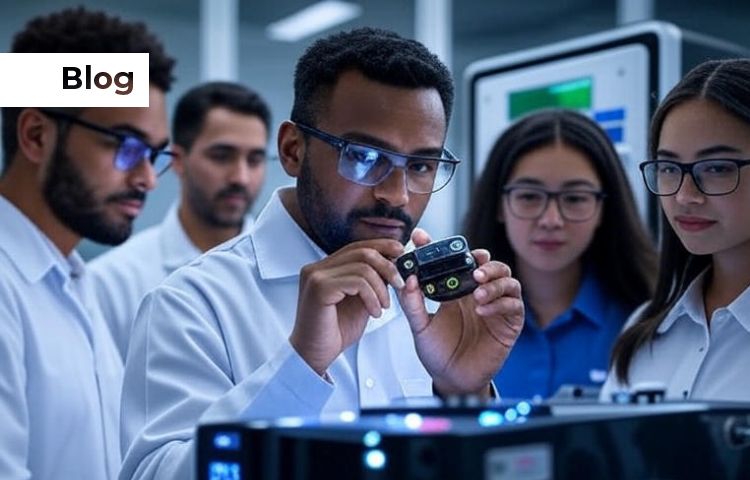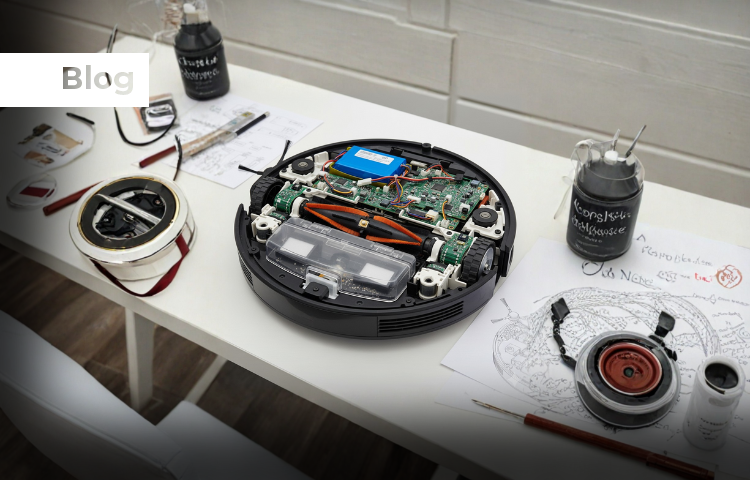As an engineer at TenXer Labs, I’ve spent the last few years developing remote evaluation labs for semiconductor devices, including building the remote lab for Allegro Microsystems’ ACS37220 current sensor on our LiveBench platform. This hands-on experience has given me a deep appreciation for the challenges in designing high-power EV systems. From troubleshooting thermal issues in traction inverters to ensuring fault detection in DC fast chargers, I’ve seen how the choice of current sensor can make or break a design. In this article, I’ll share insights on solving common problems in EV applications by focusing on how to select an appropriate high-power density current sensor. We’ll use examples from devices like the ACS37220 to illustrate key considerations, but the goal is to equip you with a framework for evaluating options based on your specific needs.
EV systems are evolving rapidly, with demands for higher efficiency, smaller footprints, and enhanced safety. Current sensors play a pivotal role in monitoring power flow, but choosing the right one requires balancing factors like accuracy, response time, thermal resilience, and integration compatibility. Let’s break down the most critical problems in key EV areas—traction inverters, onboard chargers (OBCs), DC fast charging, and smart fuses—and discuss how to approach sensor selection to address them.
Understanding the Core Challenges in EV Current Sensing
High-power density in EV designs means dealing with currents up to 200A or more, often in compact, high-temperature environments. Traditional sensing methods, such as shunt resistors, introduce power losses and require additional isolation, which can complicate layouts and reduce efficiency. Hall-effect sensors offer a non-contact alternative with galvanic isolation, but not all are optimized for power density. The key is to prioritize sensors that deliver precision without sacrificing speed or robustness.
When selecting a sensor, start by defining your application’s requirements:
- Current Range and Directionality: Does your system need bidirectional sensing for regenerative braking?
- Accuracy and Linearity: What error tolerance can you afford? Aim for ±2% or better to avoid efficiency losses.
- Response Time: For fault-prone scenarios, look for sub-5μs detection to prevent damage.
- Thermal and Environmental Specs: Ensure AEC-Q100 qualification for automotive extremes (-40°C to +150°C).
- Package and Integration: Compact QFN packages save space and aid heat dissipation.
- Output and Features: Ratiometric analog outputs for scalability, plus digital fault pins for quick alerts.
Testing is crucial—remote labs like the one I built for the ACS37220 allow virtual sweeps, transient simulations, and thermal analysis without physical hardware, helping validate choices early.
Addressing Precision and Efficiency in Traction Inverters
Traction inverters convert battery DC to motor AC, handling dynamic currents that swing from negative (regen) to positive (acceleration). A major issue is maintaining accurate current feedback for control algorithms like FOC, where even small errors cause torque ripple, reducing range and increasing wear. In my lab builds, I’ve simulated scenarios where poor linearity at high currents led to 5-10% efficiency drops.
To solve this, choose a sensor with differential Hall-effect technology to minimize external field interference—common in EV’s crowded under-hood spaces. For instance, sensors supporting ±200A bidirectional range with low sensitivity error (around ±1.8%) ensure reliable data across the spectrum. Evaluate linearity through sweep tests: define start, mid, and end currents (e.g., -150A to +150A) and check for deviations in output voltage versus reference.
Response time is another pain point during rapid transients, like gear shifts, where delays can overload switches. Opt for sensors with fast fault detection (e.g., 3μs) and a dedicated output pin to trigger protective shutdowns. In designing the remote lab, I incorporated 40kHz chopping tests to mimic these events, plotting rise/fall times to assess dynamic performance. Thermally, select packages with good dissipation; compact 4x4mm designs paired with thick PCB traces can keep junctions cool under continuous load.
Ensuring Safety and Balance in Onboard Chargers (OBCs)
OBCs manage AC-to-DC conversion for battery topping, but imbalances in multi-phase systems can degrade power factor and introduce harmonics, violating grid regs. Overcurrent risks battery degradation, while slow detection might miss shorts. From my experience building evaluation setups, inconsistent zero-current readings often complicate end-of-charge detection.
Select sensors with ratiometric outputs that scale with supply voltage, maintaining accuracy amid fluctuations. Low offset errors are vital for precise monitoring at low currents. For fault handling, programmable overcurrent thresholds via external components allow tailoring to your OBC’s specs—say, tripping at 150A for a 400V setup. Consistency validation is key: run repeated queries at fixed currents to spot drift or outliers, ensuring repeatability within 0.5%.
Integration-wise, prioritize isolated sensors (2kV+ rating) to skip extra barriers, saving space. In the lab I developed, thermal analysis over 3-minute runs highlighted how effective copper layouts dissipate heat, preventing hotspots that could skew readings in prolonged charging cycles.
Tackling Speed and Reliability in DC Fast Charging
DC fast chargers deliver high power (up to 350kW), but faults like arcing from worn connectors demand instantaneous intervention. Thermal buildup in cables during sessions is another issue, potentially leading to insulation failure if unmonitored.
For these, focus on sensors with ultra-low response times to interrupt via contactors before escalation. High bandwidth handles ripple from switched supplies, aiding compliance with protocols like CCS. Choose devices embeddable in current paths for direct thermal feedback, enabling adaptive algorithms that adjust power based on temperature.
In lab simulations, transient response tests under step changes revealed how quick analog outputs track references, crucial for real-time control. Evaluate with heatmaps to confirm even distribution, ensuring the sensor withstands sustained high loads without accuracy loss.
Building Robust Protection with Smart Fuses
Smart fuses provide intelligent overcurrent protection in EV power distribution, but false trips from noise or inaccurate sensing disrupt operations. Unlike passive fuses, they need reliable data for programmable logic.
Select sensors offering both analog monitoring and digital alerts for redundancy—analog for nuanced control, digital for emergencies. Noise immunity via differential sensing prevents nuisance activations. Low power draw suits battery systems, and automotive-grade temp ranges ensure reliability.
In the remote lab, overcurrent tests with customizable thresholds helped fine-tune trip points, while consistency checks validated stability under static conditions.
For these, focus on sensors with ultra-low response times to interrupt via contactors before escalation. High bandwidth handles ripple from switched supplies, aiding compliance with protocols like CCS. Choose devices embeddable in current paths for direct thermal feedback, enabling adaptive algorithms that adjust power based on temperature.
In lab simulations, transient response tests under step changes revealed how quick analog outputs track references, crucial for real-time control. Evaluate with heatmaps to confirm even distribution, ensuring the sensor withstands sustained high loads without accuracy loss.
A Framework for Choosing and Validating Your Sensor
To pick the right high-power density current sensor:
- Map Requirements: List current range, accuracy needs, and environmental constraints.
- Compare Options: Look at Hall-effect vs. alternatives; prioritize compact, isolated designs.
- Simulate and Test: Use tools for accuracy sweeps, transients, and thermals.
- Integrate Smartly: Optimize PCB for heat and noise; verify with references.
- Iterate Based on Data: Export logs for analysis, refining as needed.
From building the ACS37220 lab, I’ve learned that remote testing accelerates this process, revealing issues like thermal gradients or transient lags early.
For practical exploration of these concepts, check out the ACS37220 remote lab on LiveBench





